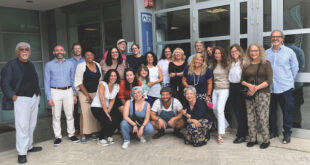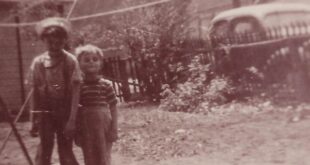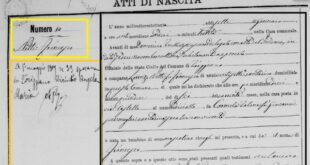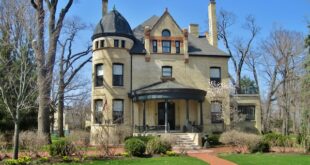Many of us remember playing ball at Kensington’s Morandi’s Park and making some friends that didn’t go to school with us at St. Anthony’s. They were the friends we played with and swam with all summer long — and then — after that, not at all. Maybe we’d run across them on “The Ave” (Michigan Avenue, that is) but that was it. Then, high school came along and we were surprised and pleased when the same names popped up in school.
The Mixtackis and Dudas and Ostrowskis and Opyts all became high school classmates. That’s when it dawned on us that when we played baseball at Morandi’s Park, we were playing on “their” field. It was the field that the kids from the Polish parish, St. Salomea, played on.
As time went on, we all grew up doing the same things, like cruising up and down “The Ave” and going to the Mendel and St. Willibrord dances. For some of us, our Polish friends (we considered ourselves Italian and most everyone else “those Americans”) became our good friends. Many of them became part of our circle of friends that we hung out with all of the time, forging lifelong bonds.
However, we’ve never really known much about their church, except exactly where it was physically in relation to St. Anthony’s or Morandi’s Park. It turns out that St. Salomea started out much nearer to St. Anthony than it now is, and even became a parish before St. Anthony existed.
Thanks to Richard Draus and his sister, Virginia Schaussburger, I’ve gotten hold of a history of St. Salomea that was compiled by their brother Tom Draus, who now lives in Hazel Green, Wis. It is very interesting reading, and it became even more interesting when I realized that the last names of some of the founders, like the Mixtackis, Opyts, and Dudas, were the same names as our former baseball-playing summer friends and high school classmates.
According to Tom Draus’ research, the village of Kensington was established in 1852 along with the Kensington railroad depot at 117th Street. The village boundaries were 115th Street on the north, 125th Street on the south, State Street on the west, and just the other side of the Illinois Central Rail Lines on the east.
Just as with St. Anthony’s beginnings, a group of fervent Polish “paesani,” or the Polish equivalent, got together and decided they wanted their families to have the benefit of a solid tradition-based spiritual life. They missed their ethnically rooted church, but they didn’t let that stand in the way of expressing their faith.
They attended and became strong and faithful members of Holy Rosary Irish Parish, which was built in 1883 across from Palmer Park on what was then South Park Avenue. The Polish members of Holy Rosary endowed the new church building with a stained glass window bearing the Polish inscription “Zwiazek Narodowy Polski” (God Save Poland).
In 1897, a group of Polish families leased a hall at the corner of Kensington and Prairie avenues as the beginnings of their own church. For two years, the Rev. Fr. Francizek Krol traveled all the way from Hegwisch, where he was pastor of St. Columba Polish-Irish Parish, to celebrate Mass for this new and growing congregation. To ensure their children had a good tradition based education, a school was operated in the same building during the week.
Three years later, the first St. Salomea Church, a wooden structure, was completed at 118th Street near Indiana Avenue. With 200 members, the church was dedicated on Nov. 18, 1900, with the first pastor being the Rev. Casimir I. Gronkowski. There was no official St. Salomea rectory, so Fr. Gronkowski took up residence at St. Nicholas Church rectory at 113th and State streets.
Finally, in 1913, the years of fervent prayers and frugal saving gave rise to the gothic-style church building we are all familiar with. The church was dedicated as St. Salomea by Archbishop James Quigley on May 30, 1913. It had been built by the Van Etten Brothers of Roseland at a cost of $85,000.
Through the years, the parishioners added a rectory, a convent and a school building. The parish flourished and grew well into the 1960s. In 1990, the heartrending decision was made to close the church, which led to the parishioners becoming a part of St. Anthony’s. St. Anthony’s Territorial Parish now includes the former St. Catherine of Genoa, Holy Rosary Slovak, St. Nicholas, St. Louis of France, Holy Rosary Irish, and St. Salomea parishes.
Thanks again to the Draus family — Richard, Virginia, and Tom — for providing the background materials for this column in honor of our Polish friends from Roseland.
In Memoriam
Joanne P. Corrado, 73, of Lynwood, formerly of Dolton and Roseland; wife of James Corrado; longtime bookkeeper at Union National Bank. … Mary Rossi, 98, of Tinley Park, formerly of Roseland; wife of the late John Rossi. … Mary Ann Januchowski Kurke, 64, of Homewood, formerly Roseland; life partner and best friend for 25 years of Patrick Daly.
Contact CJ Martello at 1501 W. Belmont Ave. #708, Chicago, IL 60657; 773-525-7823; or cjfranoi@yahoo.com; Roseland Roundtable on Facebook.
 Fra Noi Embrace Your Inner Italian
Fra Noi Embrace Your Inner Italian







